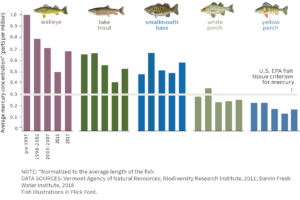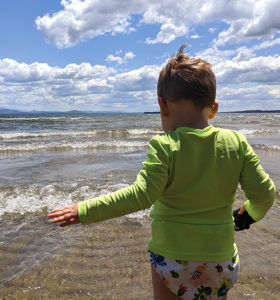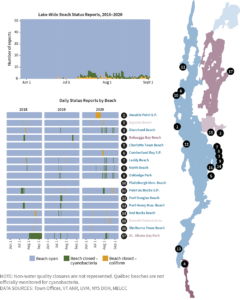Lake Champlain provides high-quality drinking water to more than 145,000 people.
Lake Champlain is a safe and reliable source of drinking water to approximately 24% of the Basin’s population. There are 100 public water suppliers in the Lake Champlain Basin that pump, treat, and distribute water for use and consumption. As is true throughout much of the world, consuming untreated water is considered unsafe and is not recommended. All public water utilities are required to monitor for 86 potential contaminants in drinking water, including several microorganisms, disinfectants, disinfection by-products, inorganic and organic contaminants, and radionuclides. Drinking water from Lake Champlain rarely exceeds limits for any of these contaminants.Lake Champlain fish can be safely enjoyed as part of a healthy diet when consumption advisories are followed.
Fishing is an important way that communities in the Basin connect with the Lake Champlain ecosystem. New York, Vermont, and Québec have each determined safe fish consumption levels for their jurisdictions to provide guidance to anglers. Mercury biomagnifies through the food chain, which means that older, larger predatory fish typically contain more mercury than smaller fish. Therefore, a small species such as yellow perch will generally contain lower levels of mercury than lake trout, a larger predatory fish. Because children and women of childbearing age may be more susceptible to negative effects of mercury consumption, advisories are sometimes more restrictive for these groups. Local and national efforts have resulted in decreases in mercury concentration in several Lake Champlain fish species. This was particularly true from the 1990s until 2011, when mercury decreased in nearly all fish species sampled (Figure 1). Between 2011 and 2017, however, the trend reversed, and mercury was found to have increased in all species sampled. The reason for this reversal is unclear, and research is underway to investigate potential causes for the change.
The Lake Champlain Basin’s rivers and lakes are safe for swimming at most times.




